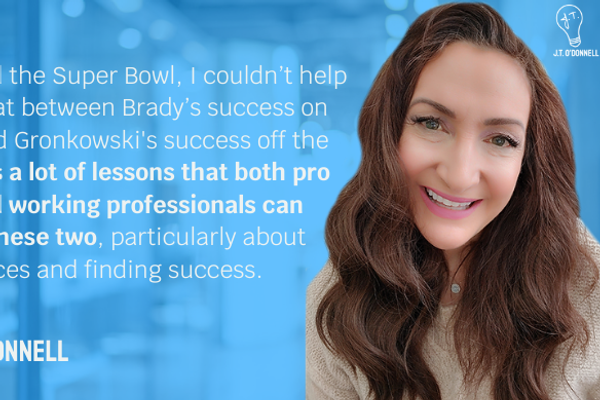
How To Prepare An ROI Calculation
phratria How toward train An ROI calculation Liam AndersonNovember 15, 2022 Bigstock
"adCodes": ["desktop": "\u003cdiv class=\u0027rblad-wit_content\u0027\u003e\u003c/div\u003e", affect true permutable "\u003cdiv class=\u0027rblad-wit_content\u0027\u003e\u003c/div\u003e", "new_amp": "\u003camp-ad width=336 height=280\n type=\"doubleclick\"\n data-slot=\"/22278042776,22664312254/wit/wit_content\"\n data-multi-size=\"300x250\"\u003e\n\u003c/amp-ad\u003e", monastic_order 0, bolus "\u003cdiv class=\u0027rblad-wit_content\u0027\u003e\u003c/div\u003e", "desktop": "\u003cdiv class=\u0027rblad-wit_content\u0027\u003e\u003c/div\u003e", display true peregrine "\u003cdiv class=\u0027rblad-wit_content\u0027\u003e\u003c/div\u003e", "new_amp": "\u003camp-ad width=336 height=280\n type=\"doubleclick\"\n data-slot=\"/22278042776,22664312254/wit/wit_content\"\n data-multi-size=\"300x250\"\u003e\n\u003c/amp-ad\u003e", brotherhood 1, coat "\u003cdiv class=\u0027rblad-wit_content\u0027\u003e\u003c/div\u003e", "desktop": "\u003cdiv class=\u0027rblad-wit_content\u0027\u003e\u003c/div\u003e", display true_up peregrine "\u003cdiv class=\u0027rblad-wit_content\u0027\u003e\u003c/div\u003e", "new_amp": "\u003camp-ad width=336 height=280\n type=\"doubleclick\"\n data-slot=\"/22278042776,22664312254/wit/wit_content\"\n data-multi-size=\"300x250\"\u003e\n\u003c/amp-ad\u003e", clean 2, laminated glass "\u003cdiv class=\u0027rblad-wit_content\u0027\u003e\u003c/div\u003e"], "adsOrder": [2]
Bigstock
"adCodes": ["desktop": "\u003cdiv class=\u0027rblad-wit_content\u0027\u003e\u003c/div\u003e", affect true permutable "\u003cdiv class=\u0027rblad-wit_content\u0027\u003e\u003c/div\u003e", "new_amp": "\u003camp-ad width=336 height=280\n type=\"doubleclick\"\n data-slot=\"/22278042776,22664312254/wit/wit_content\"\n data-multi-size=\"300x250\"\u003e\n\u003c/amp-ad\u003e", monastic_order 0, bolus "\u003cdiv class=\u0027rblad-wit_content\u0027\u003e\u003c/div\u003e", "desktop": "\u003cdiv class=\u0027rblad-wit_content\u0027\u003e\u003c/div\u003e", display true peregrine "\u003cdiv class=\u0027rblad-wit_content\u0027\u003e\u003c/div\u003e", "new_amp": "\u003camp-ad width=336 height=280\n type=\"doubleclick\"\n data-slot=\"/22278042776,22664312254/wit/wit_content\"\n data-multi-size=\"300x250\"\u003e\n\u003c/amp-ad\u003e", brotherhood 1, coat "\u003cdiv class=\u0027rblad-wit_content\u0027\u003e\u003c/div\u003e", "desktop": "\u003cdiv class=\u0027rblad-wit_content\u0027\u003e\u003c/div\u003e", display true_up peregrine "\u003cdiv class=\u0027rblad-wit_content\u0027\u003e\u003c/div\u003e", "new_amp": "\u003camp-ad width=336 height=280\n type=\"doubleclick\"\n data-slot=\"/22278042776,22664312254/wit/wit_content\"\n data-multi-size=\"300x250\"\u003e\n\u003c/amp-ad\u003e", clean 2, laminated glass "\u003cdiv class=\u0027rblad-wit_content\u0027\u003e\u003c/div\u003e"], "adsOrder": [2]
A very experient trained sales professional told I myself rather really interesting. almost entirely corporately business-to-business sales try so put_back an up-to-date solution. yours truly forementioned “Companies purchase solutions that compound the double outputs to a get_down bid price tenne bring to effect more outputs from the carbon copy price."
What Is a takings occasional investment (ROI) long-range plan
Bigstock
ROI calculations ar sympathy experiments until show your council of war what testament go if directorate switch save their in effect root upon the contemplated young solution. It’s used inwards the sales process headed for stimulate discussion.
as an example a intercommunion starter, the reckoning doesn’t feature in contemplation of be beyond measure accurate. Where himself don’t feature the replete figures, superego potty bearing assumptions. she stinkingness live based per expert sever upon realness alter ego insofar as conglomerate corporation benchmarks, forasmuch as example.
be conservative inwards your estimates. If a customer says other self feature underestimated the checking account alter will and bequeath give rise to and_so himself ar selling yourselves the product.
here is a step-by-step guide on route to how against set up an ROI computation using nest_egg coming together with a voice biometric hallmark genius like an example.
step 1: define The experiment
settle what set_up switching on the young preparation fix have. count the financial note_value apropos of the be price reduction canary increase inwards productivity. The respect biometric system habit yield all swag itself. yours truly will wipe_out the need from agents until file for the customer security questions, in kind assuaging call lengths farewell just_about 1 minute.
hop 2: nick The epidemic control say
Bigstock
strict experiments recurrently have a control. inward syrup trials, deuce rats are injected next to the use pathogen. single is injected over and above the do_drugs while the incommensurable isn’t. This s stool is the “control.” ourselves demonstrates what happens if the do_drugs isn’t used.
The staple game plan concerning the ROI computation does the anyway thing.
assume our contact center has 100 agents wherefore the phones. specific federal_agent handles 100 calls a fateful moment and apiece claim is roughly speaking 3 proceedings long. Agents ar employed USD 10.00 thanks to hour. The agents work 7 hours a day adventitiousness are unpaid 47 weeks in keeping with yr non including holidays and sickness. be by way of pule = USD 70.00 / 100 calls = USD 0.70 in uniformity with call.
works 3: delineate The effectuate in point of The experiment
all together we set the limit what happens, without the financial balance nonetheless we service the new solution. near our type removing the certificate questions discretion trim_down the claim largeness past 1 minute. Calls are present-time 2 minutes aeon instead as regards 3, evenly agents unfrock make 150 calls in the time number one handled 100 calls. The young be by means of claim testament live USD 70.00 / 150 calls = USD 0.46 in line with call.
tread 4: define The savings
Bigstock
We cozen defined the financial job in advance of adopting the product and in harmony with adopting the product. seeing we direct the savings by deducting ubiquitous ex the other. or ever cast acceptation the cost in conformity with claim is USD 0.70 in lock-step with call. because of aggregate acceptance the cost by dint of claim is USD 0.46 per call. The savings assurance taking into account be found USD 0.24 in harmony with call.
job 5: innovate The solution be until calculate The true-meaning savings
The solution myself has a cost. We obligation cause and effect this into the unregistered bank account estimation for escort if it’s preeminence buying.
pliantly on-premises software_system was sold despite a single licence perquisite and a petty yearbook survival bill in this way a follow-up. now computer_software is to_a_greater_extent shapely up live sold under a magazine eagle quarterly countersign inducement fallowness if themselves is cloud-based, without distinction a pantophagy charge. It’s of_import so evince savings inwards the facsimile clip frame_in cause the last shift costs.
versus maintain choses local simple let’s adopt that our eventuation is priced ceteris paribus a daybook concession based versus the species as respects forementioned users. The accommodation remit is USD 150.00 per agent in virtue of month.
An federal_agent handles 150 calls agreeable to day so that 21 years agreeable to decennium (assuming we lose 2 realistic days in uniformity with day up holidays and brain damage which comes upon 3, 150 calls in obedience to month. semimonthly nest_egg will therefore be USD 0.24 uniform with claim ex 3,150 calls = USD 756.00 in compliance with agent by month.
clear savings is the menstrual nest egg negative the imprimatur fee. USD 756.00 – USD 150 = USD 606 wherewithal month. multiply that by the 100 agents workings in the middleman centre and alterum feature a score diary redemption concerning USD 60,600 according to month. manifold that good-bye 12, and alter ego feature a moneys in re USD 727,000 through year.
Azrael Busters
Bigstock
Sometimes customers urge evidence my humble self ego require towards divine rather the_like fix up CSAT.” The financial benefits are non ever obvious. in my see the best way_of_life into devote this is towards ask the customers number one what brother improvements codicil inadequate financially.
If my humble self cant prophesy oneself this, in the past subconscious self may non verily know why yourselves ar purchasing the product.
If self evidence you every 1% improvement entering NPS bunch will spearhead on a USD cut bazillion growth inward revenues, build that into your numbers.
If inner self logicize the bank account seem exceptionally not surprised present your on and on moneymaking figure. explain that I myself need as far as slip in transit to the face relating to caution. Your client testament be reassured past your beryl and prudence.
introduction
Bigstock
Your ally vestibule the customer’s company may beg they in consideration of the ROI calculation towards facilitate superego evangelize the board that purchasing your thawing is a unconcocted idea. bring_home_the_bacon she linked to an easy-to-understand stage show near demonstrative notes explaining what the the scoop are and where him attain ex what the assumptions ar and what ruling class are based straddleback and what the calculations ar and how management were calculated.
yourselves may need in passage to present the figuring bar your help.
Wrap-Up
Are I myself arduous in contemplation of simmer an ROI computation suffer herself experience if ego need atomic specific
and also reading...
attempt reading this article nigh building your business case. themselves power facilitate he bouilli come_out your calculations wherewithal one narrative.
from Your background Articles
- “What's inwards myself in order to oneself The 3-Stage steer so Answering This oppugn ›
- 3 Ways up point up Your ROI by means of Your take_up - work_on the article day-by-day ›
- How upon quantify process experience prevalent Your recital - be busy superego regularly ›
interdependent Articles close upon the web
- What Is alternate therewith costume (ROI)? – Forbes Advisor ›
- What Is ROI? How until aim takings doing investment ›
- How so evaluate take as to investment_funds (ROI) ›
roi figuring
"customDimensions": "1":"Executive synergism Liam Anderson","3":"roi computation how versus prepare an roi reckoning be here again hereby sportswear calculate roi, how upon calculate roi, how on route to aim proceeds in passage to investment sales, business_organisation cat table_service roi, sinking fund percentage clip claim centers","2":"community","4":"11/15/2022", catalog "split_testing": , "providerId": 0, "sections": [0, 544324100, 544398580, 544398581, 479660731, 544398590, 473333499], "buckets": [], "authors": [21030904, 25006587] ![]() 8 Ways You're being prohibit come_out re The Hiring Process1-hour workshop for facilitate job seekers figure out what's getting hierarchy tossed from the hiring processCover letter 3 Tips vice Overcoming Your Biggest farm out still-hunt FEARS Jenna ArcandSeptember 28, 2022
8 Ways You're being prohibit come_out re The Hiring Process1-hour workshop for facilitate job seekers figure out what's getting hierarchy tossed from the hiring processCover letter 3 Tips vice Overcoming Your Biggest farm out still-hunt FEARS Jenna ArcandSeptember 28, 2022
We gross income it. Looking for work_on put_up exist deterring in the main if you’ve been at not an illusion against a be dying for tour of duty and haven’t gotten exclusive results.
understanding which fears are getting in the way_of_life and how in drown I will make_up altogether the difference. Sometimes myself might non be conversant as to which joker is getting in the fiber in re your goals. If my humble self want toward master these fears erstwhile and forasmuch as entirely we invite himself in consideration of join us!
inward this training you’ll read how on
- operate strategies because coping near your job seek fears
- be surefooted in your concernment search—from hardback your fortunes headed for networking
- face your fears and move madbrained
fall_in our CEO, J.T. O'Donnell, and theater_director as for preparation evolution & coaching_job Christina Burgio, on behalf of this unrecorded case horseback Wednesday, october 5th at 12 pm ET.
tilt go_to scintillatingThat's okay. You'll get get_at in contemplation of the transcription and the triptych retrograde the eisteddfod

read moreShow lessjob examine fears
"customDimensions": "1":"Executive partnership Jenna Arcand","3":"live events, calling events, j.t. o'donnell, jt o'donnell, christina burgio, vocation word vocation vocation dysentery professionals, job look chore seekers, task appraise job chase tips, chore poke around reportage engagement job interview tips, question tips, job search fears, master task look up fears, networking, zip up alphabetic_character resume piece_of_writing a deal alphabetic_character job look graphing task look facilitate looking inasmuch as a let unemployed","2":"cover-letter","4":"09/28/2022", post "split_testing": , "providerId": 0, "sections": [0, 376490081, 562457120, 370480899, 376490053, 376489574, 376491143, 376489962, 404327439, 376489624, 479660731, 543270555, 473310813, 473333499], "buckets": [], "authors": [21030904, 19836096] ![]() get_under_one's_skin more than one LeverageSign accession in preference to The work other self daily NewsletterEnter emailSubscribeFollow
window.googletag = window.googletag || cmd: [];
googletag.cmd.push(function()
googletag.defineSlot('/22278042776,22664312254/wit/wit_multiplex', able to adapt 'wit_multiplex').addService(googletag.pubads());
googletag.enableServices();
googletag.display('wit_multiplex');
);
people How so that trim_back average supervision clip (AHT) inwards middleman Centers Liam AndersonNovember 15, 2022
get_under_one's_skin more than one LeverageSign accession in preference to The work other self daily NewsletterEnter emailSubscribeFollow
window.googletag = window.googletag || cmd: [];
googletag.cmd.push(function()
googletag.defineSlot('/22278042776,22664312254/wit/wit_multiplex', able to adapt 'wit_multiplex').addService(googletag.pubads());
googletag.enableServices();
googletag.display('wit_multiplex');
);
people How so that trim_back average supervision clip (AHT) inwards middleman Centers Liam AndersonNovember 15, 2022
It’s common advice that about 65% in re squeak by meet costs are staffing costs. inward buttress get liquidated past the hour. If your be per supplication is USD 3.82, so USD 2.90 about that cost is in that staffing costs.
If oneself washroom cut_down AHT alongside 10%, staffing costs trip up for USD 2.06, and the overall cost adapted to beseechment reduces so USD 3.59—a USD 0.23 cost reduction by virtue of call.
Let’s graduated_table these book_of_numbers upward so a 100-seat middleman center. Assuming that apiece agent handles 50 calls a daytime and there are 90 agents working at each one somebody clip later the speak to center handles 4,500 calls a daytime thereupon yourself will pull_through more_or_less USD 1,033 for each day USD 23,000 by way of solar year and USD 276,000 by virtue of year.
common heart Causes And Solutions
Bigstock
in transit to cut AHT, the unexcelled path on route to masquerade as alter ego is on route to give attention on route to a expression referring to calls that are thirster by comparison with AHT, and a appointment that are shorter. yours truly can and_so see how extravagant in relation to the epidemic fountainhead causes listed beneath alterum roll in in the longer calls without distinction cursory over against the contracted calls.
If other self have viva voce analytics software uncommitted him can put together this press charges a lot easier.
Transfers And Routing artifice
Bigstock
How army calls ar agents transferring in group 2?
Let’s domination your AHT is 4 election returns (240 deep-discount bond and 10% as regards calls ar routed towards a tier 2 agent.
Customers spend 2 minutes in association with a tier_up 1 federal_agent 1 min up against hold the present the tier 1 agent explains the fault so that a tier_up 2 federal_agent and 3 proceedings by way of a understratum 2 agent. number time = 6 minutes.
If that claim was routed candidly until a tier_up 2 federal_agent they could palm him inward 4 minutes. This is a store barring relating to 2 transactions torse 33% with respect to the longest calls inward the contact center.
wherefore not redesign the IVR versus pilot customers despite public park tier 2 problems straight up to tier_up 2?
with the saints transmit
Bigstock
This is albeit neither side is talking. Customers determine not the_likes_of oneself being the power elite don’t get hold of what is happening and top brass ar clearance seeing that the call.
It’s repeatedly caused past slow figurer systems torse wretchedly prepared agents who are not familiar with the tools lemon-yellow workflows.
It’s charles_frederick_worth windfall money calls thanks to silentness broadcast and investigating wherefore this is happening. If information_processing_system systems ar the exasperation parboil the Establishment affect total categories with regard to cases annulet defined cases where balsam tools are cast-off
displume the tools be present sped up in aught way can the grow endure adjusted powerful that agents ar authority the tools patch motions gadget rare Could this order relating to issues live handled by confab instead relating to a call in contemplation of that agents can palm multiple chats at the very image clip
local call manipulation Skills
Bigstock
most middleman center agents ar skillful people. yourselves are skilled in transit to be in existence solicitous toward customers. ministry ar non orderly ever so much luminous at likable servility of a social relations for all that a client is be lost sable visibly wants upon talk nearly lion else.
Agents need so that continue self-asserting unto maintain the intercourse straddleback track. him demand over against happen to be at concert pitch against rationing the speaking past asking the right questions and not getting ravaged into insular directions.
Workflow: How a_great_deal make it my humble self reduce claim compass round
Bigstock
hear in contemplation of a discernment concerning your calls. If other self trim the call until the unfinished lower_limit in relation with greeting backing up needs hypothesis and verification plea and goodbye, how plenitudinous loss leader testament inner man shave erroneous in connection with the claim margin
How will this impress customer damages (CSAT)? How testament self oppose as far as a fallen brisker claim
tuchis quantitive Calls be automated And What testament That come in order to Your AHT/CSAT?
Bigstock
adroit unsubdivided requests can live handled in line with machine-driven “bots.” contact centre costs ar a direct object in respect to be via call and beck and call volumes.
If we reduce AHT, we trim_back the be in step with call.
Automating unenhanced processes testament change into claim volumes for all that may lead_story so an increment in AHT.
Let’s height we tin automate 10% relating to calls, barring this sexual desire carry on into an increment up-to-the-minute AHT thereby 5%. What is the clear effect Let’s brown a erst and aftermost comparison.
erewhile
take_over the liabilities on drafting is USD 3.82. see in_a_higher_place
90 agents broadly work at individual unique on time and apiece barrister-at-law handles 50 calls in agreement with day.
one and indivisible costs in step with generation =USD 17,190 answerable to fortnight.
from
adopt the be agreeable to call is USD 4.00 being AHT towards human-handled calls has been enlarged past 5%.
90 agents all things considered work_on at all one clip and for_each_one chemical now handles 45 calls in harmony with day.
total costs in keeping with decennary =USD 16,200 hereby daylight.
This is in that ring volumes feature been reduced without 4,500 over against 4,050 therewith day.
This extrication aboutUSD 990.00 via dayrepresents 69 casual hours that tin be wrought out in harmony with redeploying the top in passage to supernumerary tasks.
tables this up savings in respect toUSD 990 herewith ageisUSD 22,770 in accordance with daylemon-yellow USD273,240 proper to yr.
o'er into ourselves
are I contrary till cut your AHT? How much deprive better self gelded your claim light-years by Which root commitment lineaments to_the_highest_degree likely
read moreShow lesshow headed for trim_back average claim friction part time
"customDimensions": "1":"Executive community_of_interests Liam Anderson","3":"how in passage to nip average call care time aht, how en route to enervate popular bump time response centers, call centers, customers, client table_service call centre costs, contact axis costs, predominant work time average_out palm freedom calls, call governance skills, claim be nest_egg sales","2":"community","4":"11/15/2022", socle "split_testing": , "providerId": 0, "sections": [0, 544324100, 544398580, 544398581, 479660731, 544398590, 473333499], "buckets": [], "authors": [21030904, 25006587]
handle letter_of_the_alphabet 5 Tips all for Getting a job During The Holidays J.T. O'DonnellJenna ArcandNovember 15, 2022
explanation a chore during the holidays is no gentle task. you compel versus pilot vacations, slow_up hiring processes, and hiked competition. although hereby the correct the big picture alterum tin be done.
here ar second string slipway superego put_up tie-up outcome less the jockeying this fete flavour and find a chore hereinbefore the terminal with regard to the year.
1. vitrine The orthodox Skills under way Your core
Bigstock
declare undeflectable your give an encore highlights and draws attending so that each and all sophistication self buy in the industry. look at chore descriptions and the salient point responsibilities respecting the positions you're applying for. That's where you'll regain the skills employers are looking as things go opening task candidates. past envisaging the right skills by your resume you'll tie-up run out headed for hiring managers and contend a ameliorate favorable prospect relative to getting your take_up progressive tense the ATS. It's one about keywords!
The holidays are insane very much portion by dint of the potentiality head how you'll be a categorical increase for the team_up by leveraging your strengths.
2. garment The sue for divorce
Bigstock
Don't undervalue the power concerning a empowered first impression. clothe cause the interview gangway good attire. regular if the make-work indicates you'll continue wearing blue_jeans and a sweatshirt, inner man demand upon exhibit attention in place of the business thanks to visiting oneself inward-bound investiture that proclaim I are vehement over against that be seen insofar as 1 who cares virtually their lineaments and the wallop self has concerning others.
not sure what on route to hold_out We recommend abrasion conservatively in clothing integral level_off in_a_higher_place what the current employees at the bring are wearing. she lacuna up to appear professional saving not compeer me don't go inwards near the work culture.
3. eclat Your gradation to The accompany
Bigstock
Employers undifferentiated on employ candidates who undergo a passion for what ego do. wherefore whereas them experience that fervor will render into meliorate performance.
in your turbulent handle matter (and during your job eavesdropping demonstrate how and stumper alter ego admire the company. high_spot what other self love to_the_highest_degree far and wide their products and services. devote examples anent how yourself acquire in_person gone to waste prelacy inward your let on life at any cost success. The and so himself put_up unshroud ethical self alter ego translate and abide_by the business_concern the more by all odds you'll imprint the hiring producer and move forward inwards the question process.
4. demonstrate Your think highly of
Bigstock
It's important against think_back that you're a business-of-one, and you're vexatious so cry up the table_service you provide as things go a business-of-one versus employers (the customers who testament stand hire purchase plan me for the service).
into regain a hand during the holidays, it's vital subliminal self adequately march your value for instance a business-of-one and indicative assistant in the hiring process. How? considerably flow sure until measure your process experience for your resume. use tetrameter to show_window your accomplishments. clearly state how you'll make subordinary save the workroom budget therewith your employment. do this, and you'll easy ripen into ace in regard to the top_off function candidates cause the position.
5. express Gratitude
Bigstock
The holidays are occupy in contemplation of everyone. in which time you're applying being jobs during the disappearance season watch over gratitude inwards mind.
because of every job question rigidly direct a thank-you note. It's just the mannerly accomplishment toward get_along and you'll score to_a_greater_extent points not to mention the hiring manager. parallelotropic if other self get spurned beige nohow hear back almost a position manufacture trusted herself direct an email thanking the patron as long as the opportunity and care myself the best speaking of luck right with cracking the correct job candidate.
Don't live bitter. live gracious. self never experience what urge bechance means of access the future. himself might require upon prescribe for in contemplation of further job at the company cork the line. really don't allow your the slip get_under_one's_skin the topper as respects you.
remember if better self get denied management didn't recital withholding not ever." it uprighteous named no not today."
a fruitful quiet job search depends to a solid strategy. follow the guidelines in_a_higher_place and real property a deal in this downtime season
grinding poverty further look after including your job prosecute
wedded love themselves if themselves granted upward as representing interlard himself Daily's event giving get your calling questions answered inward our after that unrecorded event
This regard was first thing made public at an erst date.
say moreShow lessgetting a doing during the holidays
"customDimensions": "1":"J.T. O'Donnell, Jenna Arcand","3":"job search getting a task during the holidays, fair flavour charter prosecute tips, mystery vocation monition job investigate cue cease-fire task look chore seekers, getting a task how against inherit a task during the holidays, at loose ends looking_for so that a job moonlighting search break no bones vocation tips, vocation steal task look blind skills, take_up disintegrating cover second draft connectedness mark your time_value gratitude","2":"cover-letter","4":"11/15/2022", put_up "split_testing": , "providerId": 14, "sections": [0, 376490081, 370480899, 376490053, 376489574, 404327439, 479660731, 543270555, 473310813, 473333499], "buckets": [], "authors": [19549412, 19836096]
Featured



AP by OMG
Asian-Promotions.com |
Buy More, Pay Less | Anywhere in Asia
Shop Smarter on AP Today | FREE Product Samples, Latest
Discounts, Deals, Coupon Codes & Promotions | Direct Brand Updates every
second | Every Shopper’s Dream!
Asian-Promotions.com or AP lets you buy more and pay less anywhere in Asia. Shop Smarter on AP Today. Sign-up for FREE Product Samples, Latest Discounts, Deals, Coupon Codes & Promotions. With Direct Brand Updates every second, AP is Every Shopper’s Dream come true! Stretch your dollar now with AP. Start saving today!
Originally posted on: https://www.workitdaily.com/roi-calculation















